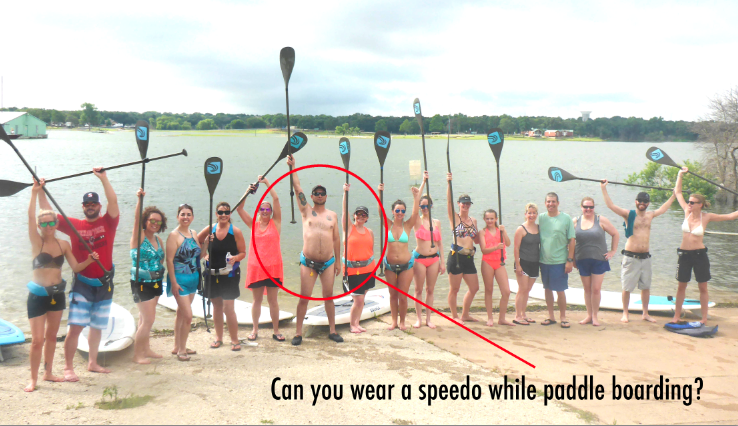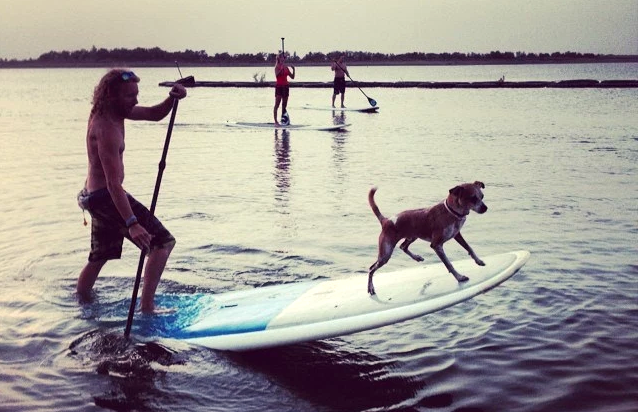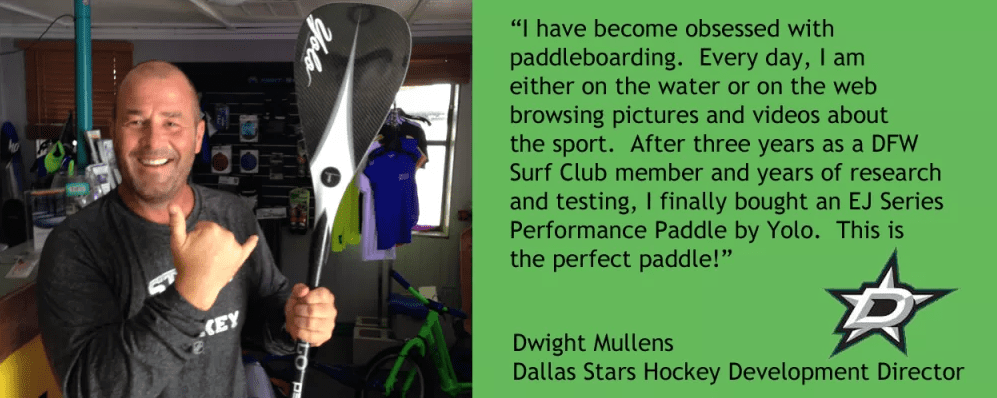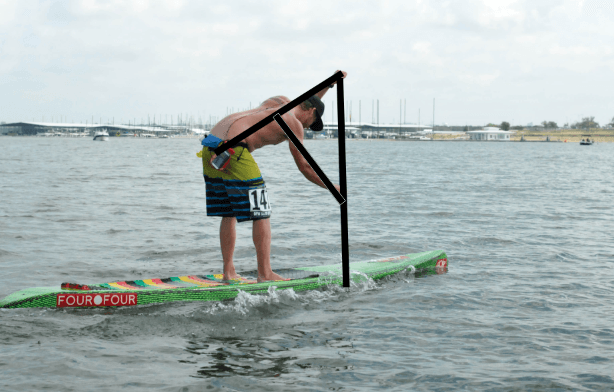Paddle with Flare. Especially if you are paddling alone or with a small group, it is very important to paddle with bright colored clothing. Also known as the peacock effect, flare is basically another term for standing out. So why is it important to stand out on the water? The same way that it is important to stand out on the mountain slopes and especially for back country skiing- SAFETY. With low light conditions of fall and winter paddling you will want to be seen on the water by an oncoming boat, your paddle partner or in a rescue situation. We recommend picking up a bright neon or pink DFW Surf hat for $20 and then you will be safe on the water by day and an attention grabbing peacock at night. (pictured below is national canoe champ Rich Stewart and Dallas Surfer/Socialite Austin McDaniel).
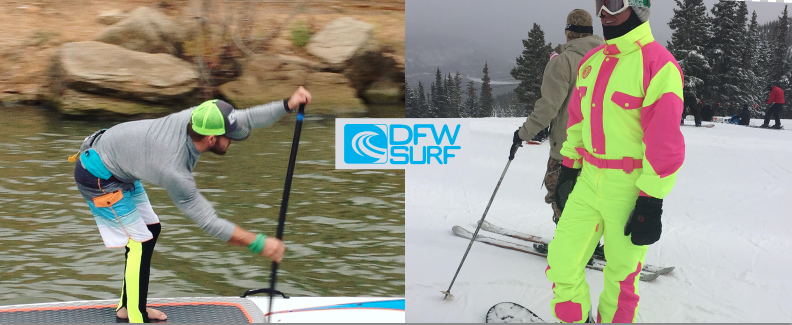
Paddle with a Partner or with a Group. Even more essential for off-season paddling is to paddle with others. Why? Because there are significantly less boaters and sailers on the lake in the off-season. If something goes wrong, who is going to know? And paddling with others is more enjoyable not to mention more motivating if you are training to be a sup racer. Pictured below is our die hard first year paddlers who are still making an appearance at Womens Wednesdays week after week.
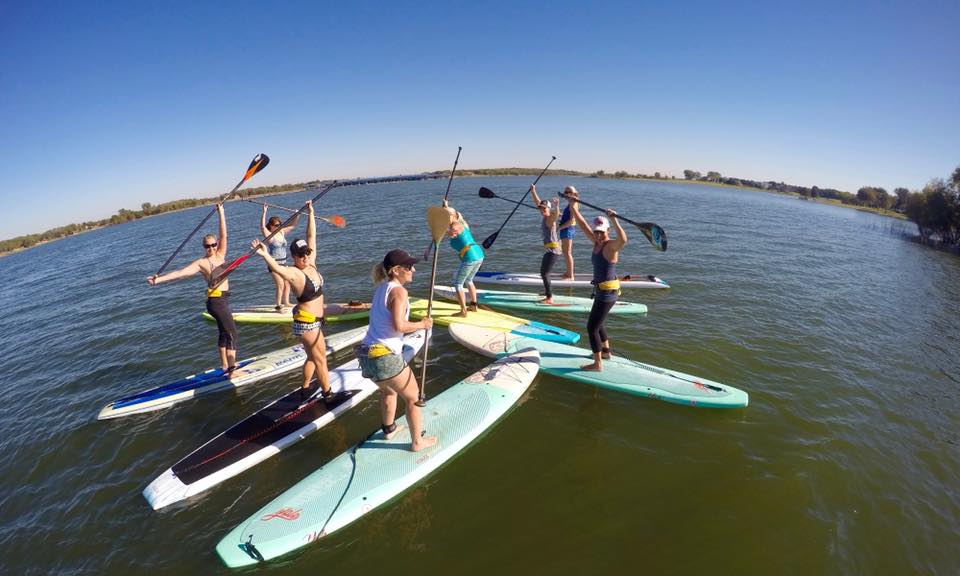
Gear Up, Dress Up. If it is cold outside, then wear something warm. If you are a beginner paddler and have a good possibility of falling in the water then wear a wetsuit. If you are a confident paddler you will at least need to throw on a pair of booties to keep your feet warm. If it is an extremely cold day your life will be miserable if you don’t have gloves. Watch the video of DFW Surf founder Tyler Marshall below try to paddle in the snow with no gloves and see how long he lasts.
Learn more about paddling with flare with top paddle athletes HERE
